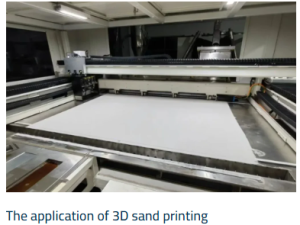Being able to rapidly produce prototypes can be a major advantage in today's manufacturing landscape. Rapid prototyping allows for quick turnaround on the development side, providing an added benefit to growing the business overall in terms of saving money and getting to the market faster. In other words, let us take a closer look at why this reduces rapidly prototyping benefits.
Several Products Development Faster
Reduce Time to Market
P1: The biggest argument in our favor of fast prototype production is that it helps to bring new products to market quickly. In the past, this process might have taken weeks or even months to go from idea to prototype, but with the advanced manufacturing technologies now available, companies can create a prototype in a matter of days or even hours. Industries such as the one using 3D printing or CNC machining are noticing that time-to-prototype has decreased from weeks to days consequently resulting in quicker iterations and faster final product launches.
Facilitates Rapid Iterations
It also means that prototypes can be created at a faster pace, leading to more iterations. Design teams will be able to help them do exhaustive testing, and improve with each iteration (because the product evolves in an iterative manner). This approach means that the final product is far more polished and ready for the market, integrating feedback and fixes much quicker than can be often be achieved.
Cost Efficiency
Minimize Development Costs
Low cost fast prototype production methods. Rapid prototyping allows companies to assess the potential for a design without investing heavily in production costs. This way even if a design needs to be modified or is not working, we can identify it without having spend significant amount earlier stages. For instance, rapid prototyping can lower the expense of creating prototyping by as much as 60% from traditional methods due to less labor and material waste, which sums to a savings of $47,000 in every million-dollar spent on manufacturing.

Optimize Resource Allocation
Companies can spend time and manpower on activities that actually add value rather than taking forever to develop a new product where they can use rapid prototyping. Given how crucial it is for Lean thinking to make the most efficient use of resources, it should not be surprising.
Improvements in product quality and innovation
Improve Product Quality
Rapid fast production of prototypes enables more testing and tweaking which equals a better product output. Every run through presents a wealth of information into performance and usability, which can be used by developers to optimise and tweak designs with real data. It test each component, which makes the final product fulfilling the customer expectation and complying with industry standards.
Foster Innovation
Rapid prototyping turn around encourages innovation. If designers and engineers know that prototypes are inexpensive and can be created rapidly, they are more open to playing with ideas. This of course leads to all sorts breakthrough products that may otherwise have never been explored if prototyping was slower and more expensive.
Boost Market Responsiveness
But things change fast and market demands can shift quickly.
Market conditions in fast-moving industries can shift rapidly. It allows companies to iterate rapidly - test and adjust products on the fly to changing customer tastes and new trends. This agility provides an invaluable edge, ensuring that businesses remain current and adapt to market forces as they evolve.
Visit our website now for a comprehensive guide on how your business can benefit from quick prototyping. In doing so, they can vastly increase manufacturing efficiency, minimize costs, and improve product quality - providing them with a significant competitive advantage in a time when the market operates at its fastest pace yet.
